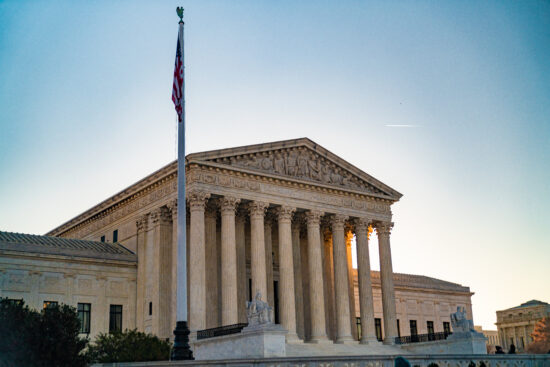On June 14, 2022, the New York Court of Appeals ruled in a 5-2 decision that Happy was not a human. Happy is a 51-year-old Asian elephant who has been kept at the Bronx Zoo for the past 45 years, having spent the previous 15 years in isolation in her enclosure due to a hostile relationship with other elephants at the zoo. The Nonhuman Rights Project representing Happy in the case contended Happy ought to be legally considered a person, thus possessing the ability to invoke habeas corpus which would free her from isolation at the zoo. The court, while acknowledging that “dialogue regarding the protection and welfare of nonhuman animals is an essential characteristic of our humanity,” ultimately disagreed with Happy’s defense, asserting that Happy is, in fact, only an elephant.
There is certainly merit within the public square, and particularly among Christians, to deliberate and discuss how we can best care for creation and animal life. The first commandment God gave Adam in the Garden of Eden was to have dominion over the rest of what God created (Gen. 1:28), a responsibility characterized by cultivation and stewardship. Yet, this case, rather than demonstrating how best to care for creation, can serve as a warning to Christians who seek to define what is or is not a human being especially since this question strikes at the core of many of the most pressing social questions of our day.
Defining a human being
Integral to The Nonhuman Rights Project’s argument to free Happy was the human-like qualities elephants possess. They asserted that “elephants are intelligent beings, who have the capacity for self-awareness, long-term memory, intentional communication, learning and problem-solving skills, empathy, and significant emotional response.” This appeal was unconvincing to the court because “the selective capacit[ies] for autonomy, intelligence, and emotion of a particular nonhuman animal species . . . are not what makes a person.” They continued their disagreement by stating, “the right to liberty of humans because they are humans with certain fundamental liberty right recognized by law.”
In these meager two sentences at the core of the court’s opinion, we find the crux of the matter: there is something more to being human than mere rational capacities, intelligence, or emotional capabilities. Even though the court rightfully never attempted to define what it means to be a person, their reticence to do so serves as an example of wisdom for Christians seeking to ensure human dignity for each person.
Genesis 1 communicates that persons are different from the rest of creation because we are made in the imago Dei, or in the image of God (Gen. 1:26-27). Theories as to what the imago Dei might include range from having rational capacity, creative freedom, walking on two legs, or self awareness. Yet, these definitions fall into the same trap as The Nonhuman Rights Project—by ascribing what it means to be a person to a set of attributes, these potential definitions are both underinclusive and overinclusive. They are underinclusive in that some persons who do not have the defining capacity can be excluded; and overinclusive in that some non-persons possess certain capacities traditionally associated with humanity.
If the New York Court of Appeals had agreed with The Nonhuman Rights Project’s definition of what it means to be human, persons with mental disabilities, those who are preborn and newly born, and persons with cognitive diseases would have been excluded from personhood. Christians can fall into the same trap. Whether it be rational capacity, emotional capabilities, social disposition, or any other well-intentioned articulation of the principle found in Genesis 1, groups of persons who are made in the image of God will invariably be denied their dignity if one attempts to define the image of God. When this happens, we desecrate the image of God because we refuse to affirm it in others simply due to a lack of the specified quality we have come to value. Such patterns of thought disorder a Christian theological anthropology because it locates human dignity in an attribute rather than the status of the imago Dei that is the very root of what it means to be human.
3 lessons from this case
While the Christian who is concerned for the inherent value of other beings can celebrate the court’s decision to unwittingly protect the rights of all persons regardless of ability, three lessons are to be gleaned from this case:
1. The world is composed of human beings with a range of abilities and perspectives. Each of these persons is to be celebrated because they are created in the image of God and loved by him. Further, church communities ought to be constituted of persons of all abilities and all stages of life, as each person teaches and instructs us on the love, creativity, intelligence, and care of the Creator.
2. Creation is marvelous. The fact that an elephant can possess all these traits similar to humans should be worthy of our praise to the Creator. Allowing ourselves to find wonder within creation permits even more opportunities to worship God. Such an ability found in a non-person in creation simply points to the creativity and intelligence of our Creator. Yet, even as amazing as creation is, let us not confuse an animal as what it means to be a person.
3. Christians valuing and advocating for every person’s inherent dignity ought to use this case as a clarion call for our vigilance in protecting the vulnerable. Theologically, we ought to use this case as a reminder to be cognizant of what it means to be a human being and what it means to be made in the image of God. Politically, this case should serve as a reminder to Christians in the public square to remain vigilant in our defense of others who have their human dignity threatened. Because all people are created in the image of God, the rules and laws governing our country should respect the inherent dignity of all persons.
As we go forward, let us think carefully about our emotions, language, and actions.
We can enjoy God’s kind gifts, such as amazing animals, without disrupting the value of each human being made in the image of God and abandoning God’s design for the created order. Sometimes, in our culture of confusion, events that might seem silly to some of us, such as the legal trial of an elephant at a zoo, can mount a significant challenge to what it means to be a person, and thus, what it means to be made in the image of God. Let us be a people who meet these temptations and challenges with the truth of God’s Word, a ready answer, and a commitment to uphold the special value God has bestowed on every human being.







